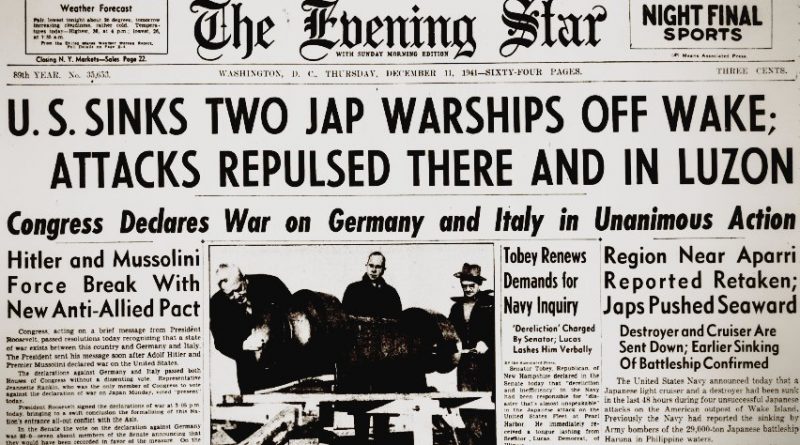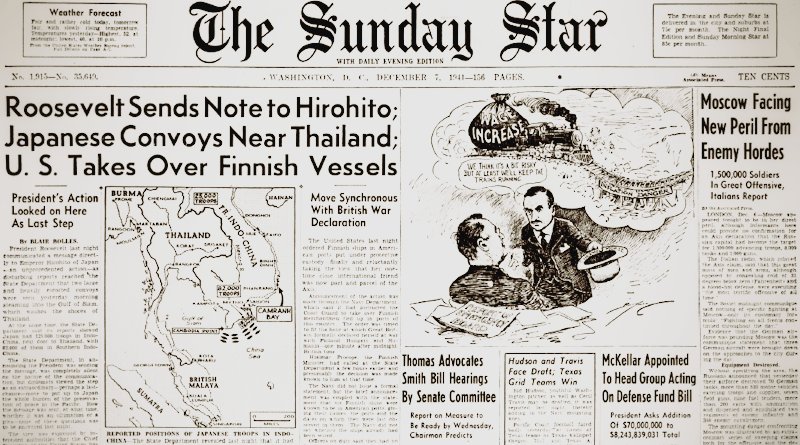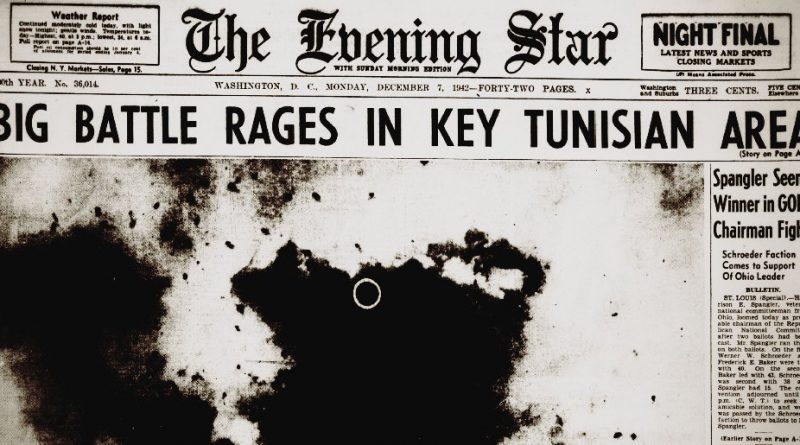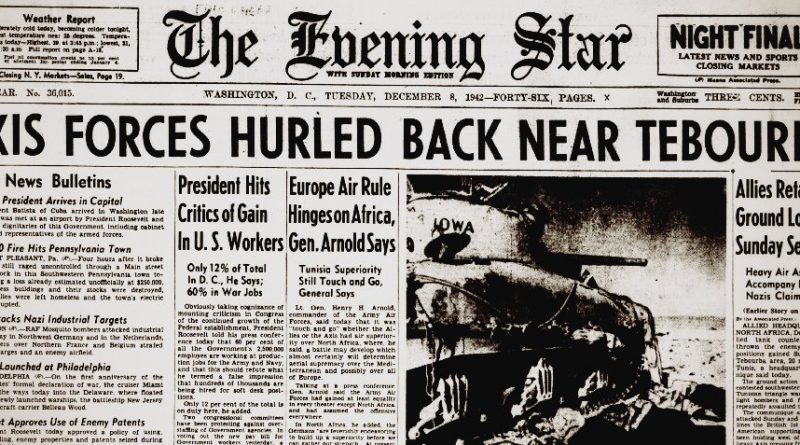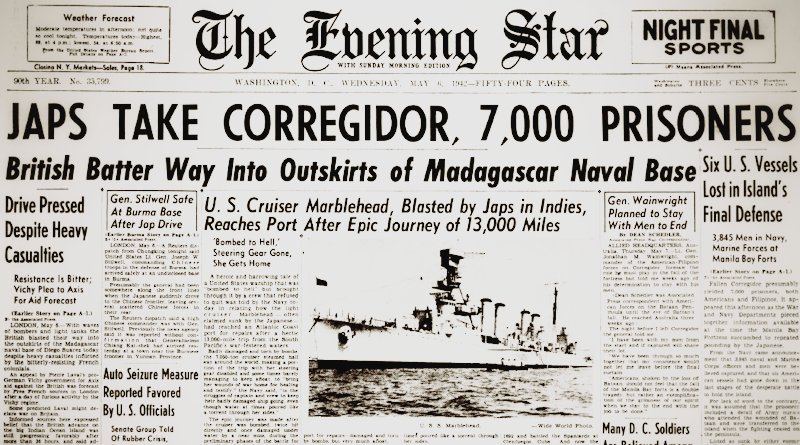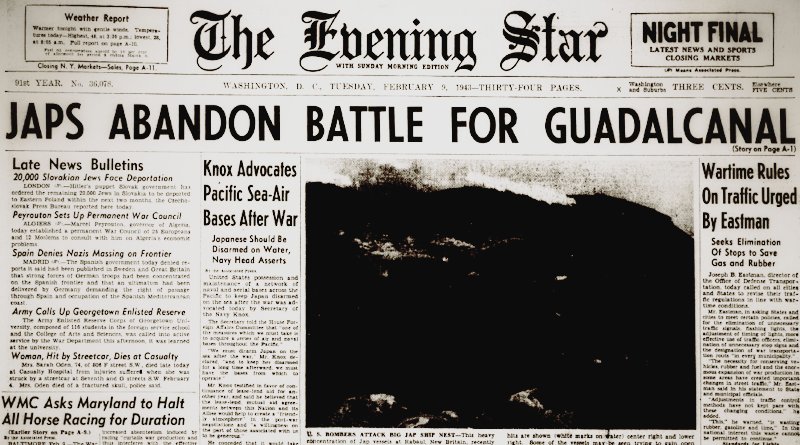World War II Chronicle: December 11, 1941
Click here for today’s newspaper
Nazi Germany was under no obligation to declare war on the United States if Japan was the aggressor. However, with virtually no consultation with his staff, that is exactly what Adolf Hitler did.
Italy also declared war, but when you consider their contribution to the Axis cause, Benito Mussolini probably didn’t concern us much more than Cuba and Costa Rica troubled the Führer. Within hours, Congress responds with a unanimous declaration of war against Germany and Italy.
Just six months ago Hitler ordered the seemingly invincible Wehrmacht to invade a country that could have been an ally. Now the Germans had ground to a frozen halt just short of Moscow and were facing a far different Red Army than the one they dominated during the early days of Operation Barbarossa; one that is seizing the initiative and counterattacking. In support, “General Winter” drops the Russian temperatures so low that the planet Mars — nearly 50 million miles further away from the sun — was actually warmer.
The Soviets were growing stronger each day and Germany now faces two enemies with incredible warmaking capacity and industry that lies beyond the reach of the Luftwaffe. The spires of the Kremlin were in sight, but this was as close as the invaders would get.
5,000 miles to the east, the small American garrison on Wake is putting up a fierce defense against Rear Adm. Kajioka Sadamichi’s invasion force. The Japanese begin shelling the island at a range of 9,000 yards. When there is no counter fire — Maj. James P. S. Devereux ordered his Marines to hold their fire — the enemy closes to 4,500 yards, believing the previous airstrikes must have destroyed the island’s cannons.
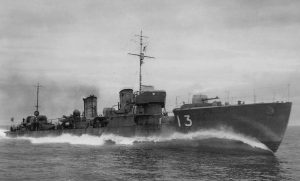
The 5-inch coastal defense guns (taken from the former battleship USS Texas) open fire at close range, hammering the Japanese. A well-placed round finds the destroyer Hayate‘s torpedoes (or perhaps the depth charges), setting off a tremendous explosion that cuts the ship in half. Only one sailor survives the sinking. 1st Defense Battalion Marines damage three additional destroyers and a high-speed transport. The Japanese abort the landing and retreat.
Meanwhile, Wake’s four remaining F4F-3 Wildcat fighters have been orbiting high above the battle, waiting to pounce. Although outnumbered, Marine aviators intercept a flight of Japanese warplanes. Capt. Henry T. Elrod shoots down two aircraft before he and his fellow aviators target the Japanese ships. Elrod becomes the first American pilot to sink a surface ship during World War II when his bombs detonate Kisaragi‘s depth charges. The destroyer goes down with all hands.
Marine Fighter Squadron 211 (VMF-211) aviators also damage light cruiser Tenryu and an armed merchant cruiser, and in another sortie, bomb the Japanese submarine RO-66…
Lt. Haruki Iki, commanding the 3rd Chutai, Kanoya Kokutai (3rd Squadron, Kanoya Air Group) boards the Mitsubishi G4M1 “Betty” bomber he used to hit the battle cruiser Repulse yesterday. The pilot drops two wreaths into the South China Sea at the scene of yesterday’s battle; one to honor his fallen comrades and the second to honor the hundreds of Royal Navy sailors that perished...
Secretary of War Henry L. Stimson “confirmed” that B-17 bombers sunk the battleship Haruna off Luzon Island, however we now know that no battleships were assigned to that particular fleet and Haruna was nowhere near the area. Chalk this up to the fog of war. Three B-17 Flying Fortress bombers of the 14th Bomb Squadron, 19th Bomb Group spotted the Japanese invasion fleet landing troops on the north of Luzon Island, and Capt. Colin P. Kelly, Jr.’s B-17 (more on him tomorrow) dropped their bombs on the largest ship, which they thought was Haruna but in fact was the heavy cruiser Ashigara. The crew believed that two of the three 600-lb. bombs hit the ship, and since they had no fighter cover and smoke obscured the target after their attack run, the B-17s headed back to base.
George Fielding Eliot column “Japan’s Secret Weapon” on page 13… Sports section begins on page 58
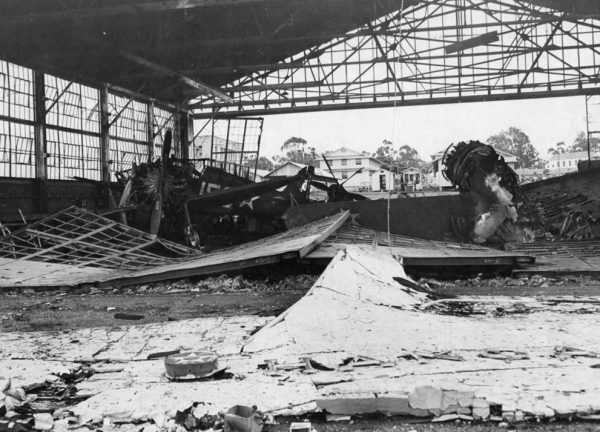
Evening star. (Washington, D.C.), 12 December 1942. Chronicling America: Historic American Newspapers. Lib. of Congress.
https://chroniclingamerica.loc.gov/lccn/sn83045462/1942-12-12/ed-1/
